Northern Nevada is a high desert climate, so traditional lawns require a lot of water and maintenance. If you're looking for a more water-efficient and low-maintenance option for your yard, there are many great lawn alternatives available.
Here are a few ideas to get you started:
Clover:
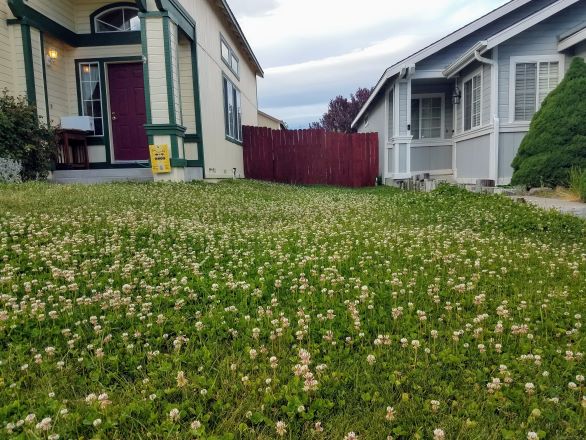 A bee-friendly front yard in the Truckee Meadows. The owners replaced their conventional lawn with a clover lawn. (Photo credit: Ray Hopper)
A bee-friendly front yard in the Truckee Meadows. The owners replaced their conventional lawn with a clover lawn. (Photo credit: Ray Hopper)
Clover is a nitrogen-fixing plant, which means it helps to improve the soil quality in your yard. It's also a very drought-tolerant plant, and it can be mowed to look like a traditional lawn or maintained to provide food for bees and other pollinators.
Yarrow:
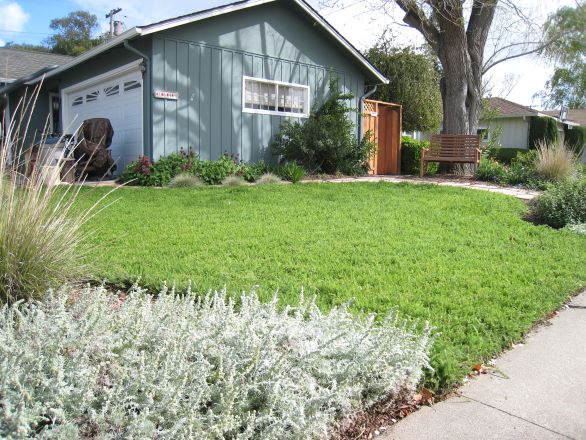 Yarrow can be mowed and maintained to look similar to a conventional lawn, and it uses less water. (Photo credit: Stephanie Morris, Native Plant Design)
Yarrow can be mowed and maintained to look similar to a conventional lawn, and it uses less water. (Photo credit: Stephanie Morris, Native Plant Design)
Yarrow is a perennial wildflower found throughout North America. It can be mowed infrequently and maintained as a low groundcover that withstands light foot traffic. It has low water requirements and does best in poor soils that are well-drained, which are common in many areas of northern Nevada.
Groundcovers:
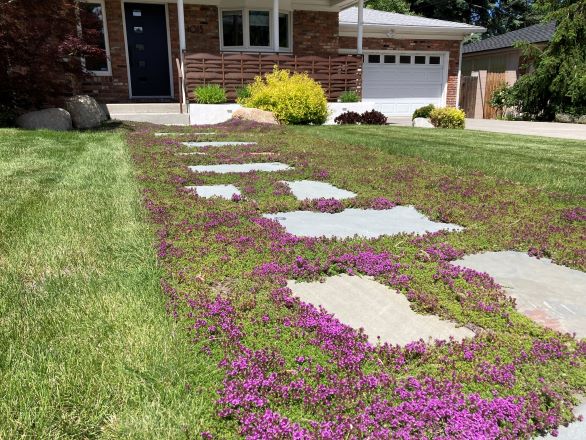 Creeping thyme groundcover around step stone path in a front yard in the Reno/Sparks area. (Photo credit: Carrie Jensen)
Creeping thyme groundcover around step stone path in a front yard in the Reno/Sparks area. (Photo credit: Carrie Jensen)
Groundcovers are low-growing plants that spread out to cover the ground. They require very little water and mowing, and they can provide a variety of textures and colors in your yard. Some popular groundcovers for northern Nevada include creeping thyme, creeping phlox and creeping Oregon grape.
Ornamental grasses:
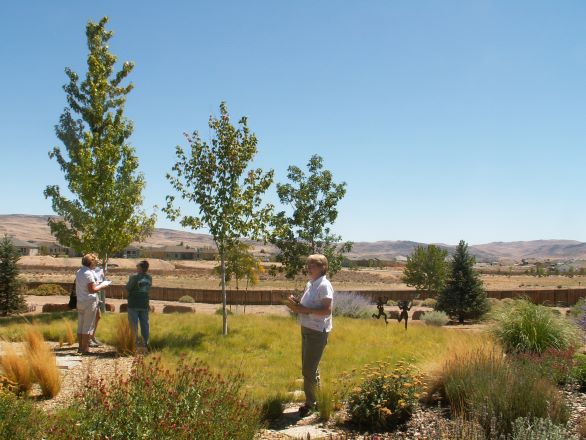 Blue grama meadow bordered by water-wise perennials. (Photo credit: Wendy Hanson-Mazet)
Blue grama meadow bordered by water-wise perennials. (Photo credit: Wendy Hanson-Mazet)
Ornamental grasses add a touch of elegance and movement to your yard. They come in a variety of colors and textures, and they can be used to create a variety of different looks. Some popular ornamental grasses for northern Nevada include blue grama, blue fescue, Great Basin wild rye and blue oat grass.
Native plants:
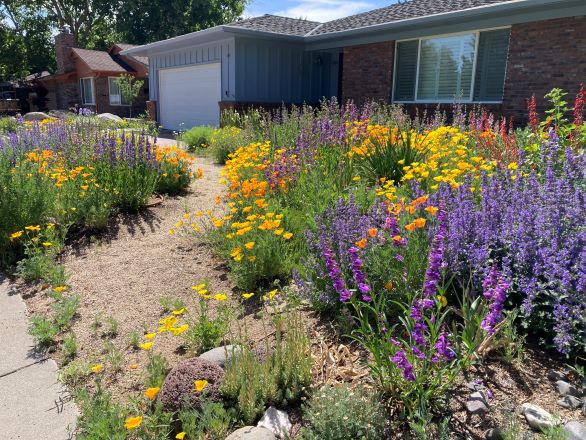 Example of a front yard in the Reno/Sparks area where a portion of the lawn was replaced with native and water-wise perennials. (Photo credit: Carrie Jensen)
Example of a front yard in the Reno/Sparks area where a portion of the lawn was replaced with native and water-wise perennials. (Photo credit: Carrie Jensen)
Native plants are adapted to the local climate and conditions, so they require very little water and maintenance. They also provide food and shelter for wildlife, and they can help to improve the overall health of your yard. Some popular native plants for northern Nevada include penstemons, buckwheats, and globemallow.
No matter what lawn alternative you choose, make sure to do your research to find the right plants for your climate and needs. With a little planning, you can create a beautiful and low-maintenance yard that's perfect for northern Nevada.
Here are some additional tips for choosing and maintaining a lawn alternative in northern Nevada:
• Choose plants that are adapted to the local climate and soil conditions.
• Consider the amount of sun and shade in your yard when choosing plants.
• Plant your lawn alternative in the spring or fall when the weather is mild.
• Once established, water your lawn alternative deeply and infrequently.
• Mulch around your plants to help retain moisture and suppress weeds.
• Inspect your lawn alternative regularly for weeds, pests and diseases.
With a little care and attention, your lawn alternative will thrive for years to come.
This material is based upon work supported by the National Institute of Food and Agriculture, U.S. Department of Agriculture, under Award No. 2021-70006-35488. Any opinions, findings, conclusions or recommendations expressed in this publication are those of the author(s) and do not necessarily reflect the view of the U.S. Department of Agriculture.


